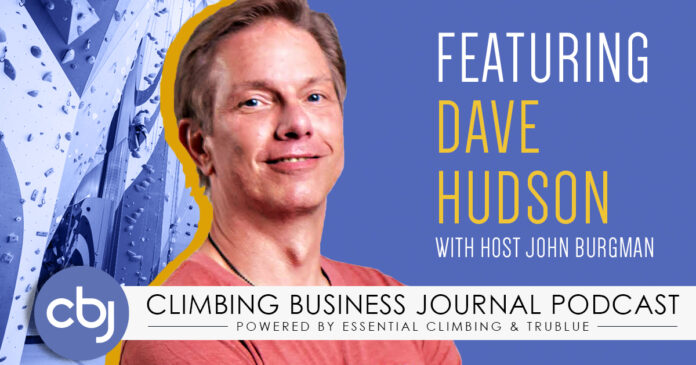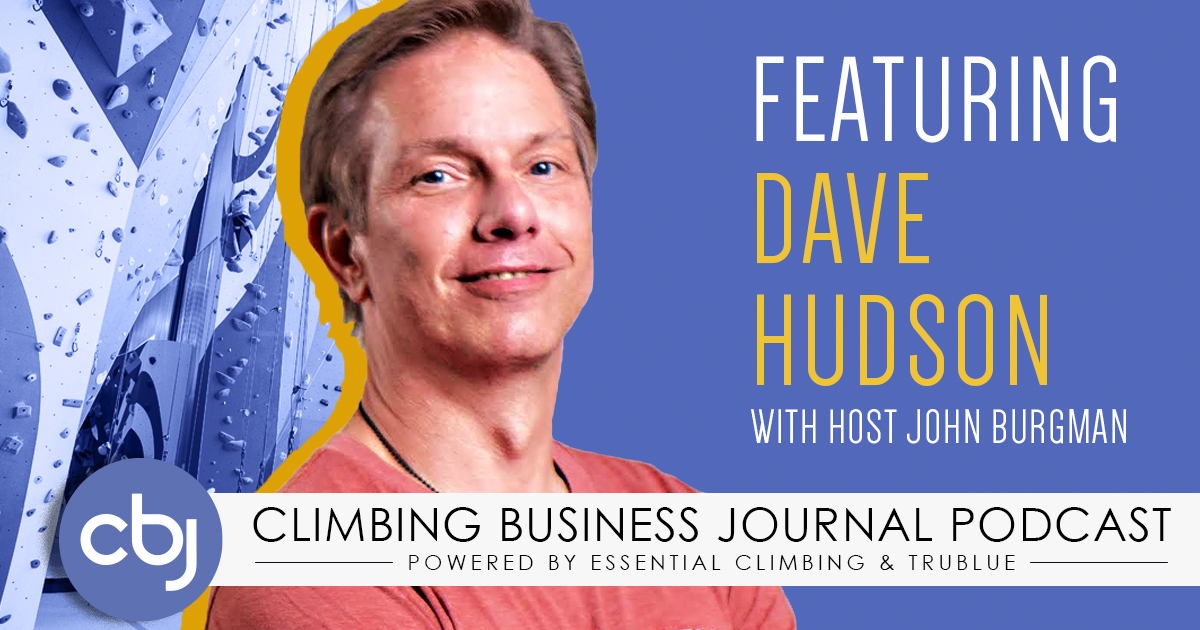
Dave Hudson has been involved in climbing business for a long time, specifically on the youth coaching and organizational and competition judging sides of things, and his involvement in all that actually predates much of the youth comp climbing scene we know today. Hudson’s currently the youth manager at First Ascent; he’s also the head coach there. In our conversation together, we dove into his journey in the industry and the youth programming at First Ascent, the impact of the Olympics on youth program participation rates, how youth programs have changed in the past 5-10 years, as well as the rise of data-driven, research-based training.
Thank you to Essential Climbing and TRUBLUE for your support!
And thank you Devin Dabney for your music!
Timestamps
00:00 – Intro
02:34 – Dave’s background
08:00 – The role of the Midwest in the American indoor climbing scene
10:55 – The role of indoor climbing for Midwest climbers
12:52 – Youth programming at First Ascent
15:44 – Employee shortages
16:51 – The role of the Olympics in indoor climbing
18:14 – Overestimating the role of the Olympics?
19:44 – Youth programming evolution
23:46 – Recreational and the Olympic track in climbing
28:03 – Potential for climbing programs in more high schools?
37:07 – Most logical way to split climbing abilities in comps
33:02 – Encouraging youth to compete; competition = life lessons
35:44 – Parents being behind organizations
37:04 – Youth climbing predictions for the future
41:30 – Predictions for facility evolution?
45:46 – Climbable art
47:02 – Future of First Ascent
48:53 – History + closing
Abridged Transcript
BURGMAN: First of all, I thought it might be really interesting if you could go over a bit of your background.
HUDSON: Sure. It’s been a long time since I’ve been in the industry. I started maybe back in the late eighties; there were very few gyms in the country, and I was living in New York, working in advertising, and kind of talked my way into a training clinic at the Snowbird International World Cup, the first World Cup in the U.S. in ‘88. [I] then got involved in the industry proper by managing what was at the time the biggest indoor wall in the world, which was The Sporting Club…
I managed some other gyms out in Salt Lake City, Rockreation, one of the first bigger gym chains on the Black Diamond campus, and some other health club walls. And when I was back in Chicago, I started working in a really tiny bouldering gym in the basement of a gymnastics gym. And I stayed at that little gym, training climbers for 18 years, and put some national champions out of that little gym. It was a great little space. It was about, I don’t know, 900 [or] 1000 square feet, about 15 feet tall, chopped rubber landing surface. But it was just a really fun, really high energy place to be…
From there I moved on; finally we had a big gym open in Chicago. First Ascent, which I’m one of the founders of now, opened in 2015 with our first location, [First Ascent Avondale]. We now have seven [locations], and BKB is here as well. And then Movement came here, which probably I’m sure you know, so it’s really growing in Chicago, but at the time there was just nothing but a couple health club walls and Hidden Peak. So it’s nice to see it grow the way it has, provide careers for people, and it’s just a really different world now.
I think it’s easy for people to just assume that Colorado and Utah and maybe Oregon have always been the most important places in the industry because they’ve certainly held significant importance in more recent years given the headquarters of various industry organizations. And yet, as your history attests, the Midwest really played a huge part in the history of the American comp scene and the history of the American gym scene.
It really did. Once we had regions around the country after Jeanne [Niemer] started JCCA, [climbing] was strong everywhere. And if you look at the stats, it continues to be the case. When you do analysis, who’s on [the USAC] national team over the last 10 or 15 years, who’s podiuming, it’s relatively spread out around the country…
There have been a ton of great, strong youth climbers out of Minnesota, with Alex Johnson and other people like that, and out of Planet Rock…And size wise, last year we were the largest region in USAC by far. We had the highest number of kids sign up, and they dumped a couple of states out of our region because it was too big the year before, so we actually moved out.
You’ve seen just top climbers come out of all parts of the country, East Coast and the Mid-South; Florida and Atlanta produced a lot of good climbers. Team Texas, of course, produced tons of great climbers with coach Kyle Clinkscales down there. But it has been surprising, people who don’t follow [youth comp climbing] just think it’s [the] Boulder/Front Range area and Salt Lake, but that’s not really the case.
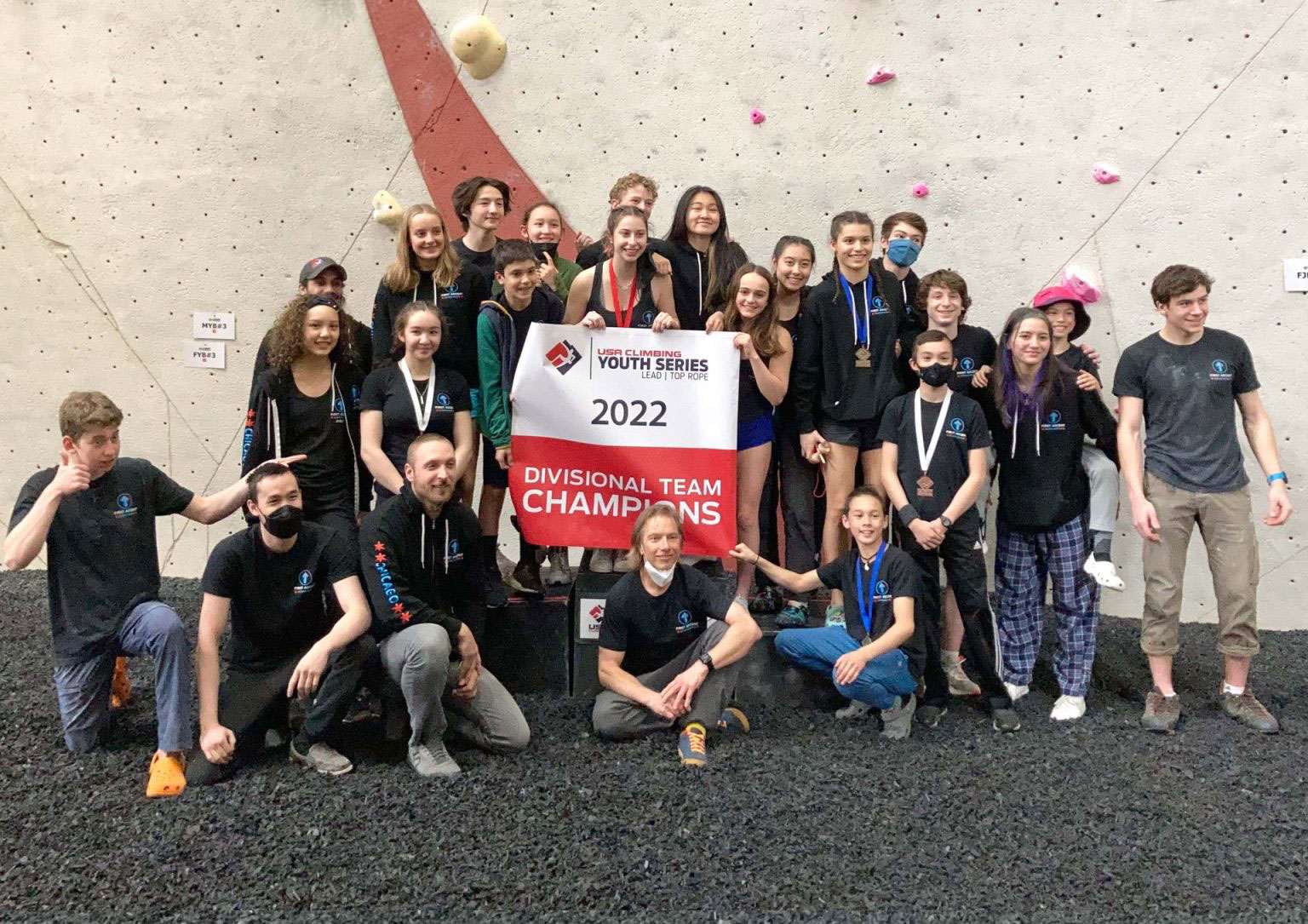
I’ve always thought that maybe one of the reasons why the gym scene did really thrive and continues to thrive here in the Midwest is because for a lot of people, if you want to go climbing, gyms are maybe not the only option but certainly the quickest and easiest option.
Yeah, that’s exactly true. There’s very little climbing close by…To go to a true modern area, it’s the Red River Gorge, and that’s a seven-hour trip depending on traffic. We have so many kids on the team over the years who have just never been outdoor climbing. Gyms are their access. And for adults too, if it’s not the main access, it’s at least the starting [point].
Can you talk a little bit about how the youth programming is organized at First Ascent?
We have a strong rec program like most gyms do…We have five levels [of youth teams]: We have a pre-team, which is a transition from rec classes into the team program, a little bit more training, learning how to train. And then we have development team and teenage teams. Those are more casual, two days a week. And then elite development team, EDT, and the elite team, which [train] three days a week, plus an extra one or two on their own usually…
The rec classes have been tough since Covid. We had a fantastic rec program with probably anywhere from 150 to 180 kids in it [at] any time. But that’s been really difficult since Covid. [It’s] not so much that the kids aren’t there; it’s that we can’t get the instructors. It’s been really difficult with staffing for everyone in the last two years. And we’re only going to hire someone who’s very qualified and very good with the kids, and we just have trouble getting them. We’re significantly smaller as a rec program, but we hope to get that back up to pre-Covid levels soon.
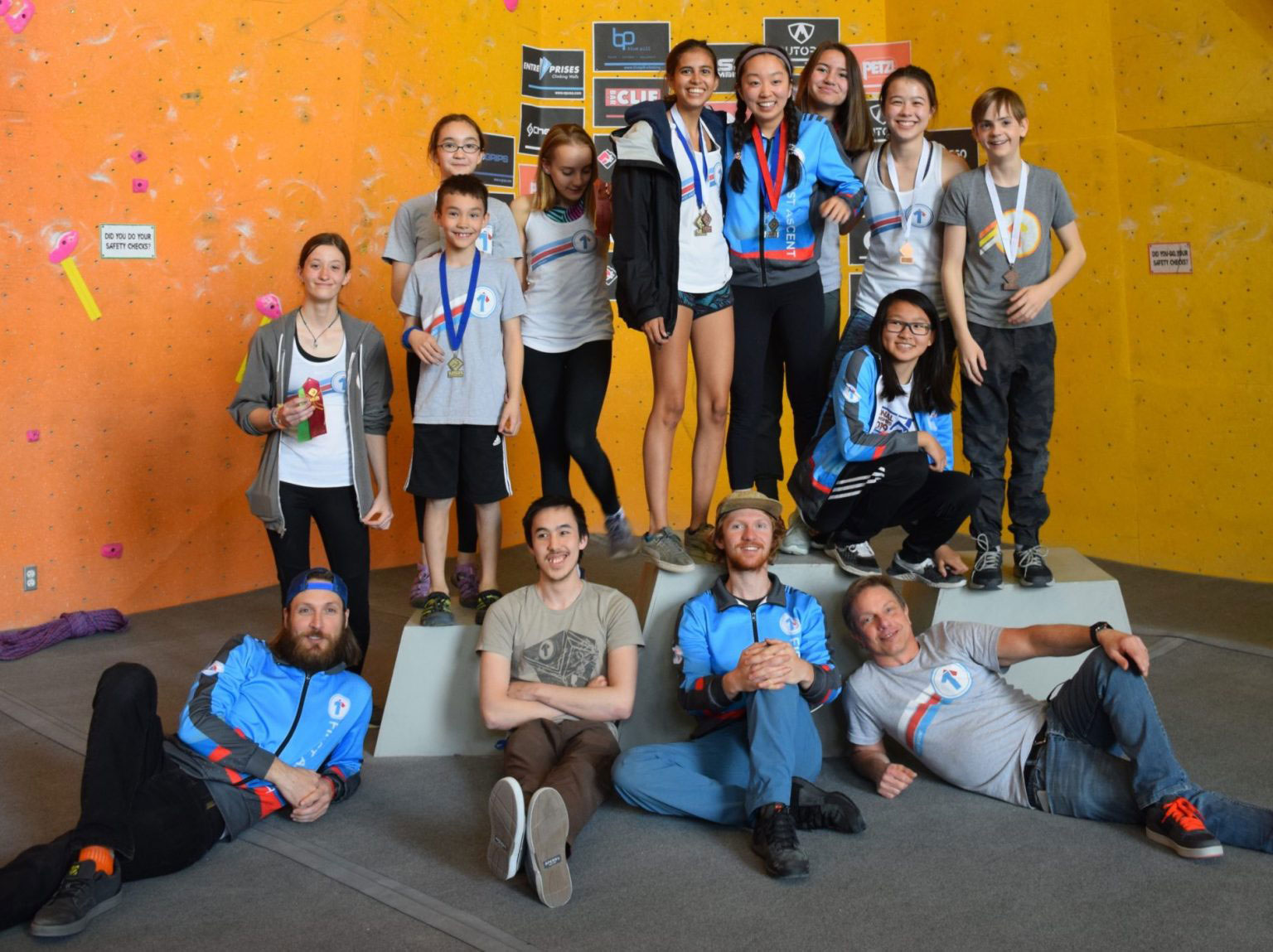
Since the Olympics, have you noticed there is that expected or predicted uptick in interest in families which saw climbing in the Olympics and then kind of came to the gym wanting to try it after that?
Honestly, I have not seen a huge influx of people who saw the Olympics and said, “Hey, I want to come try that.” It seems to be just the natural organic growth that we see of people saying, “Hey, that sounds fun. I heard about it,” or “somebody told me about it”. From my perspective, I don’t have any data on it, but it seems like it’s stayed about constant. I’ve not seen a huge influx and I’ve not heard people mention to me that they [came across climbing] on the Olympics per se. I think climbers—kids who climb and adults who climb—watched climbing in the Olympics, and they watch the streaming for the World Cups too…As far as the general population, I just don’t think enough people saw it.
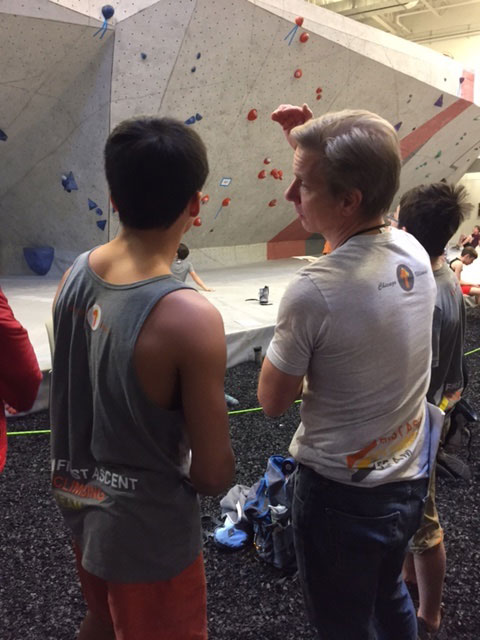
If you look back at the past maybe 10 years or 5 years, what has been the biggest evolution in youth programming?
The level of coaching has really increased, so I think that you’re seeing a lot more kids in a lot more parts of the country having access to great coaching and great programs. The number of gyms that support that have increased. So, 10 or 15 years ago, you had gyms that really bought into it and really spent money on coaches and on developing a program, which is a significant investment with a very little return or no return at first. You really have to make that investment and get someone to come to your gym and to stay and to build a program…
I’m seeing this second generation of setters and coaches [who] were coached in a program before, and we didn’t have that. [In the past] it was first generation coaches trying to figure it out as they go with those kids. [Now] all those kids have been through a program for 10 or 12 years, gone through college, and they’re coming out and they’re working in the industry and they have a tremendous amount of knowledge about how to coach somebody, how to train them, and how to deal with competitions at a higher level as well.
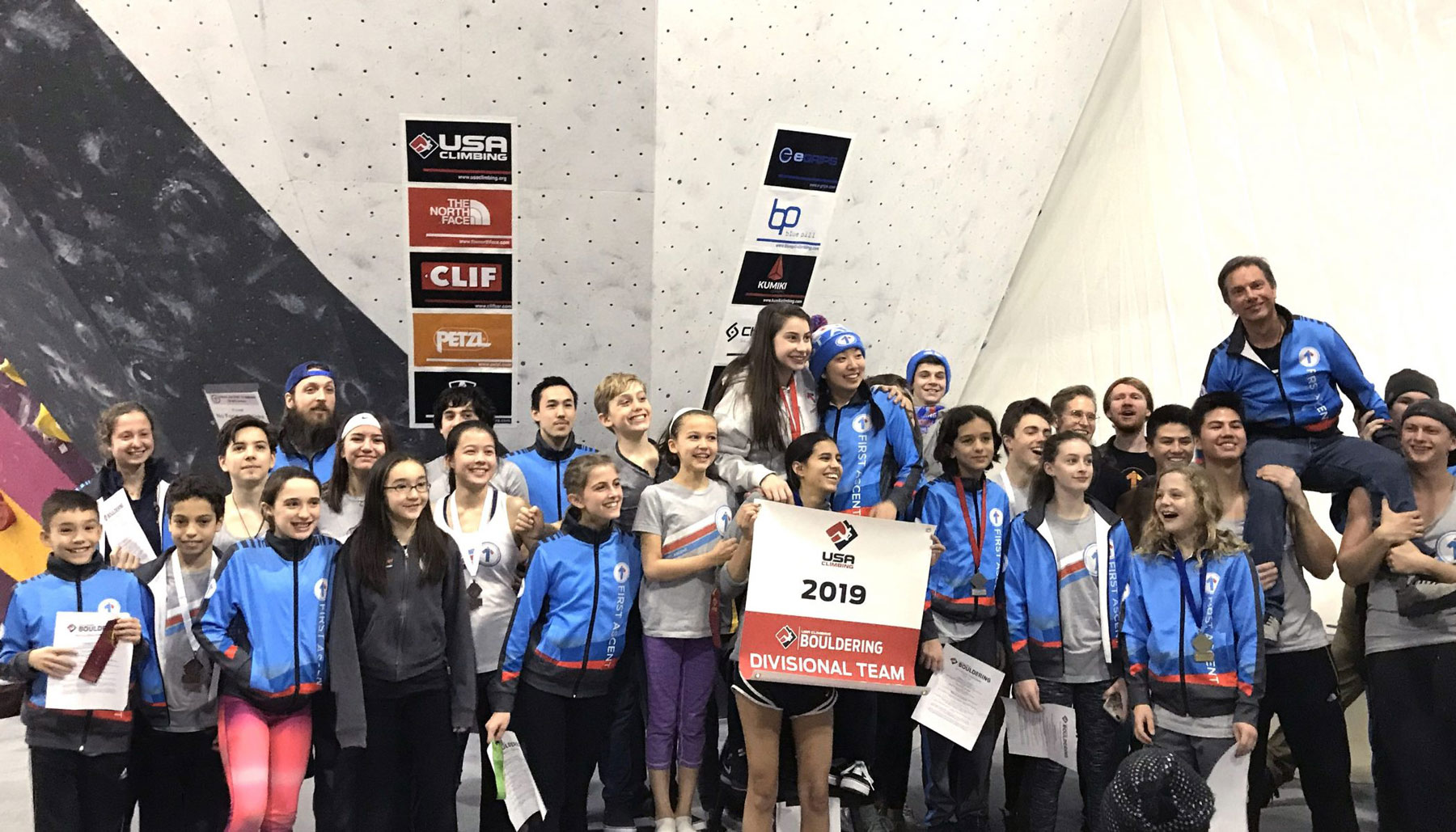
How do you see youth comp climbing, comp climbing in general, youth coaching, and the gym scene evolving in the future?
Data-driven research for someone who’s a pro bike racer who races the Tour de France or something, or a runner or anything like that, [is] unbelievable. You can’t tap it all. There is so much, you can never even read all the research. I’d like to see more of that. I think you’re going to see more data-driven, research-driven training.
I think the formats will continue to evolve too. That’s something I’m always interested in. There’s a lot of discussion on format—potential format changes, what’s going to happen with speed, and of course the Olympics, having the triple discipline, Combined only, and then going down to speed and then boulder/lead and double discipline. I think you’re going to see that evolve too. I’m not sure [what] it’s going to evolve [into], but I think you’re going to continue to see [the formats] evolve.
How do you see climbing facilities evolving as well?
The buzzword for the industry right now is “community,” but it’s true. Anyone who’s a climber knows that there is a strong community of climbers and that once you become a regular, you slide into that community and it’s a very accepting community and a tremendous community. I love it. That’s what roped me in 35 years ago and kept me [climbing]…
I think the trend that will continue for a while is to get larger spaces with less climbing, so there’s more social and community space, and offer more programming to encourage that as well. I love that, but being into training and running team programs, there’s always a bit of “I want to use some of that space for training facilities.” So that’s something you’re seeing a lot more of too. We have Moon, Kilter and Tension boards and other training elements. I think that’s going to continue as well. I think [a] more specific training apparatus—again, with this more data-driven approach and more replicable systemized approach—is going to be really useful for the high-end climbers.

John Burgman is the author of High Drama, a book that chronicles the history of American competition climbing. He is a Fulbright journalism grant recipient and a former magazine editor. He holds a master’s degree from New York University and bachelor’s degree from Miami University. In addition to writing, he coaches a youth bouldering team. Follow him on Twitter @John_Burgman and Instagram @jbclimbs. Read our interview Meet John Burgman, U.S. Comp Climbing’s Top Journalist.




